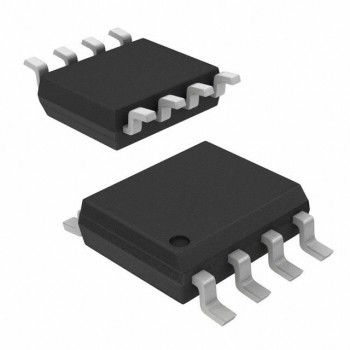Switching power supply is a commonly used power supply type in modern electronic equipment. It can convert input voltage into a stable output voltage to provide the required power for various devices. Improving the conversion efficiency of switching power supplies is crucial to reducing energy losses, extending equipment life and protecting the environment. To achieve more efficient conversion, the selection and optimization of electronic components play a key role.
1. Select efficient power switching devices
Power switching devices are the core components of switching power supplies and directly affect conversion efficiency. MOSFET (Metal Oxide Semiconductor Field Effect Transistor) is one of the commonly used power switching devices. Choosing a MOSFET with low on-resistance and low on-resistance can reduce power loss and improve conversion efficiency. In addition, the application of new semiconductor materials such as silicon carbide (SiC) and gallium nitride (GaN) can also achieve higher efficiency and power density in high-frequency switching power supplies.

2. Optimize inductance components
Inductive devices play an important role in energy storage and filtering in switching power supplies. Choosing a high-efficiency inductor with low DC resistance and low AC loss can reduce the power consumption of the inductor component itself and improve energy conversion efficiency. In addition, the use of multi-layer, flat inductors or the optimization of magnetic materials are also one of the methods to improve the efficiency of the inductor.
3. Effectively control the driving circuit of the switching tube
The driving circuit of the switch tube can affect its opening and closing speed, which is directly related to the switching loss. The use of efficient drive circuits can reduce energy loss during the switching process and improve power conversion efficiency. Special driver chips are used in the design, and the design parameters of the driver circuit are reasonably selected to reduce switching losses.
4. Optimize the output rectification and filtering circuit
The output rectifier and filter circuit have a greater impact on output stability and ripple power. Choose low voltage drop and low loss diodes or power MOSFETs as rectifier components to effectively reduce rectification losses. At the same time, rationally designing the filter circuit and selecting appropriate filter components, such as capacitors, inductors, etc., can effectively reduce the ripple voltage at the output end and improve the overall conversion efficiency.
5. Effectively control the loss of power circuits
In addition to the optimization of electronic components themselves, reducing the loss of power circuits is also an important means to improve conversion efficiency. Reasonable design layout, reducing wire length, reducing contact resistance, reducing magnetic coupling, etc. can effectively reduce the loss of the power circuit, thereby improving the overall conversion efficiency.
Summarize:
In the design of switching power supply, the selection and optimization of electronic components are the key to improving conversion efficiency. By selecting efficient power switching devices, optimizing inductance components, controlling the drive circuit of the switching tube, optimizing the output rectification and filtering circuit, and reducing the loss of the power circuit, the conversion efficiency of the switching power supply can be effectively improved, energy loss reduced, and a more environmentally friendly, Efficient power supply.
Improving the conversion efficiency of switching power supplies from the perspective of electronic components is a comprehensive engineering issue that requires comprehensive consideration of factors such as circuit design, electronic component selection, and process manufacturing. Only by comprehensively optimizing all aspects can we truly improve the conversion efficiency of switching power supplies and make greater contributions to the development of electronic equipment and energy conservation and emission reduction.
If you need electronic component selection guidance, sample testing, procurement, BOM ordering, etc., please contact us via the following email address:

